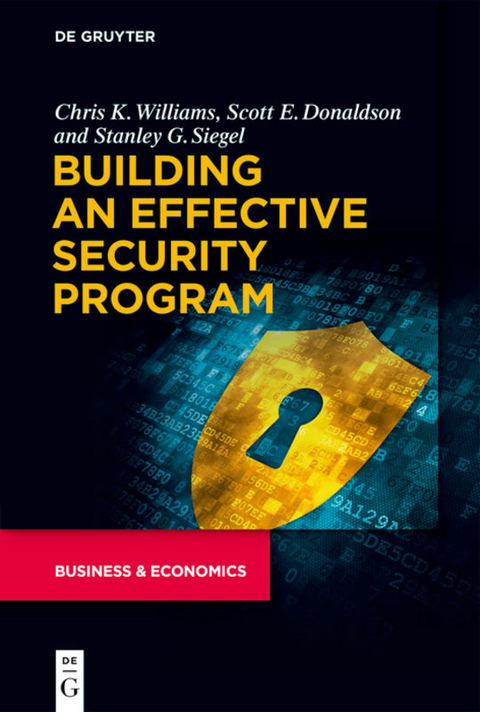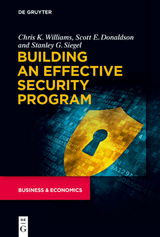Building an Effective Security Program
Chris K. Williams, Leidos, USA; Scott E. Donaldson, Johns Hopkins University, USA; Stanley G. Siegel, Johns Hopkins University, USA
FOREWORD – 1 page
ABOUT THE AUTHORS – 1 page
ACKNOWLEDGMENTS – 1 page
INTRODUCTION – 2 pages
What is this book about?
Who should read this book?
Why did the authors write this book?
Organization of the book
CHAPTERS
Chapter 1—Business Case (~15 pages)
This chapter presents the business case for setting up an enduring IT security awareness and training program for use in training the employees of the company—from IT users to career IT security professionals. This chapter introduces fundamental concepts and terms used throughout the book.
Chapter 2—IT Security Mind Set (~15 pages)
This chapter presents thinking like an IT security professional to establish and maintain common security protections.
Chapter 3—IT Security Risk Management (~15 pages)
This chapter presents a risk management process that involves asset management, security vulnerabilities, security threats, risk identification, risk mitigation, and security controls.
Chapter 4—IT Security Process (~15 pages)
This chapter presents how to establish security scopes and select corresponding controls to protect the confidentiality, availability, and integrity of company information.
Chapter 5—IT Security Scenarios and Perspectives (~40 pages)
This chapter presents how the Chapter 4 IT security process is applied to various scenarios. Each scenario will walk through a number of common security controls and apply the IT security process to identify how to protect company information.
IT security at home
IT security while traveling
IT security at work
IT security as an executive
International IT security
Chapter 6—Planning IT Security Awareness and Training (~15 pages)
This chapter presents practical guidance on how to write an IT Awareness and Training implementation plan.
Chapter 7—Implementing IT Security Awareness and Training Program(~15 pages)
This chapter presents human issues related to bringing about enterprise-wide cultural change due to implementation of an IT Awareness and Training Program.
Chapter 8—Measuring IT Security Awareness and Training Program Implementation (~15 pages)
This chapter presents practical guidance for measuring program implementation success and how to use the measurements to achieve awareness and training goals.
Chapter 9—Managing Continual Program Improvement (~15 pages)
This chapter presents practical guidance for monitoring compliance, evaluating feedback and improving the program.
Chapter 10—Looking to the Future (~15 pages)
This chapter presents a view of the evolving cybersecurity attacks as they become more capable and sophisticated.
APPENDICES – 10 pages
GLOSSARY – 3 pages
BIBLIOGRAPHY – 3 pages
INDEX – 4 pages
| Erscheinungsdatum | 22.09.2020 |
|---|---|
| Zusatzinfo | 79 Illustrations, black and white; 1 Tables, black and white |
| Verlagsort | Boston |
| Sprache | englisch |
| Maße | 155 x 230 mm |
| Gewicht | 664 g |
| Themenwelt | Informatik ► Datenbanken ► Data Warehouse / Data Mining |
| Informatik ► Netzwerke ► Sicherheit / Firewall | |
| Technik ► Architektur | |
| ISBN-10 | 1-5015-1524-1 / 1501515241 |
| ISBN-13 | 978-1-5015-1524-8 / 9781501515248 |
| Zustand | Neuware |
| Informationen gemäß Produktsicherheitsverordnung (GPSR) | |
| Haben Sie eine Frage zum Produkt? |
aus dem Bereich




